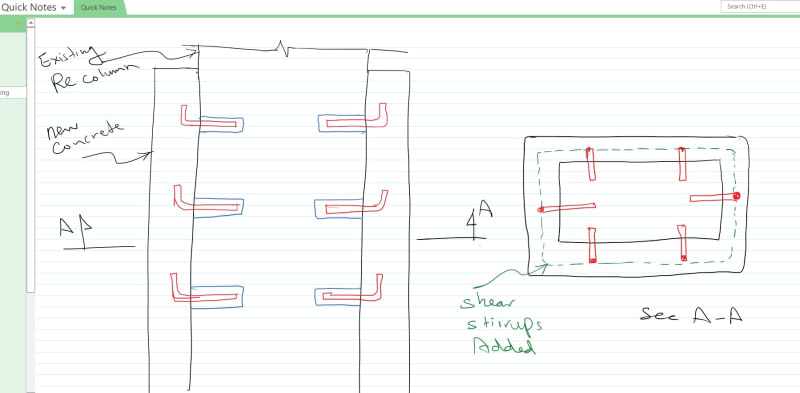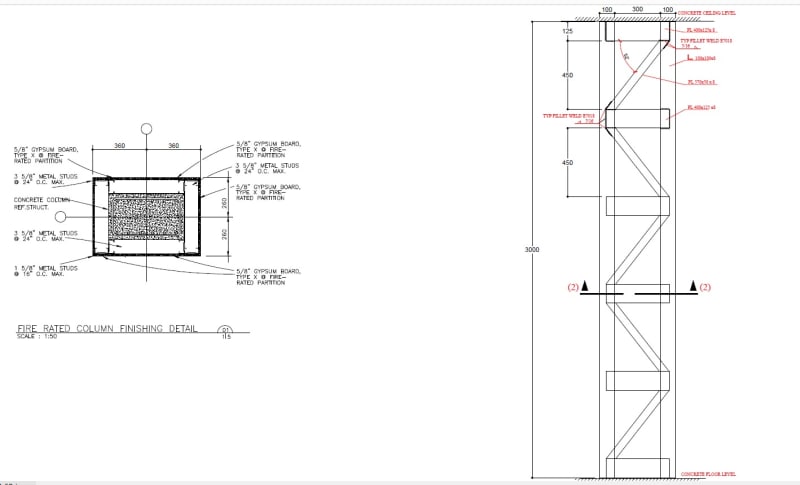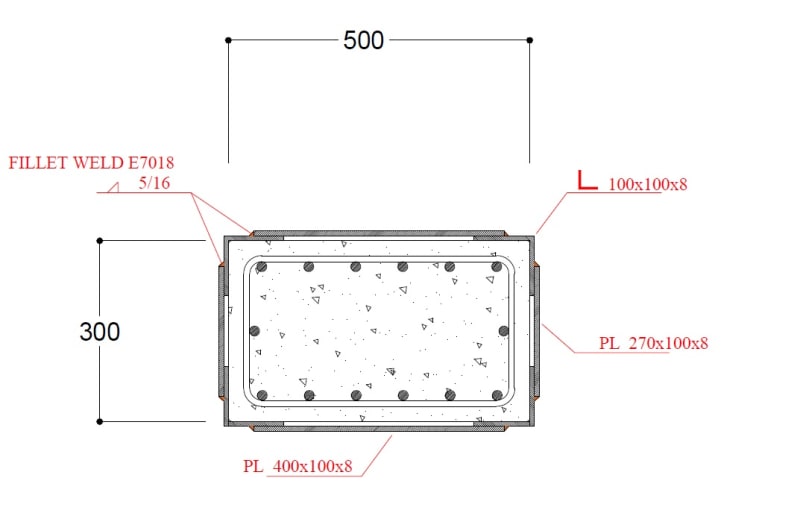ALK2415
Structural
- Sep 15, 2014
- 289
Dear Friends
I have Column encasement "Sleeve" for the sake of bearing capacity enhancement
My question if you have specific information [Guide, Manual, or Research] that summarized the best solution techniques for shear transfer?
Used/typical shear links; consist of steel rebars with 90 curved end drilled and epoxy-fixed to existing concrete column (12x24")
I have Column encasement "Sleeve" for the sake of bearing capacity enhancement
My question if you have specific information [Guide, Manual, or Research] that summarized the best solution techniques for shear transfer?
Used/typical shear links; consist of steel rebars with 90 curved end drilled and epoxy-fixed to existing concrete column (12x24")



